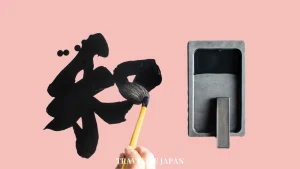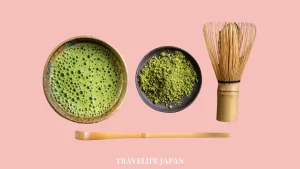Planning to visit a ramen shop in Japan? Equip yourself with essential Japanese phrases to elevate your dining experience. This guide offers key phrases, complete with pronunciation and explanations, perfect for ramen lovers and language learners alike, to communicate effectively and show respect for the rich Japanese culture.
Useful Japanese Phrases in Ramen Shop

- いらっしゃいませ Irasshaimase
“Welcome.” You’ll be greeted with this upon entering. - メニューをください Menyuu o kudasai
“Please give me the menu.” To ask for the menu. - これにします Kore ni shimasu
“I’ll have this.” When deciding on your order. - ラーメン一つお願いします Raamen hitotsu onegaishimasu
“One ramen, please.” For ordering a single bowl. - お水をください Omizu o kudasai
“Water, please.” To request a glass of water. - おすすめは何ですか Osusume wa nan desu ka?
“What do you recommend?” Use this to ask for the shop’s specialty or popular dishes. - このラーメンの味はどうですか Kono raamen no aji wa dou desu ka?
“How is the flavor of this ramen?” To inquire about the taste profile of a specific ramen dish. - スープの濃さは調整できますか Suupu no kosa wa chousei dekimasu ka?
“Can the richness of the soup be adjusted?” A query if you can customize the intensity of the broth. - 麺の硬さを選べますか Men no katasa o erabemasu ka?
“Can I choose the firmness of the noodles?” To ask if there are options for noodle firmness (soft, regular, firm). - どんなトッピングがありますか Donna toppingu ga arimasu ka?
“What kind of toppings do you have?” To know about available additional toppings. - 大盛りにできますか Oomori ni dekimasu ka?
“Can it be made as a large serving?” If you wish to have a larger portion of ramen. - あつもりはありますか Atsumori wa arimasu ka?
“Do you have ‘atsumori’ (hot noodle option)?” To ask for the hot noodles option, especially in Tsukemen where noodles are usually served cold. - 替え玉はいくらですか Kaedama wa ikura desu ka?
“How much is ‘kaedama’ (extra noodles)?” If you want an extra serving of noodles, this is particularly popular with Tonkotsu ramen. - にんにく入れますか Ninniku iremasu ka
“Would you like garlic?” When the staff asks about adding garlic. - 辛くしてください Karaku shite kudasai
“Make it spicy, please.” For a spicier flavor. - 味玉追加で Ajitama tsui ka de
“Add a flavored egg.” A common additional topping. - チャーシュー追加で Chaashuu tsui ka de
“Add extra chashu.” For more slices of pork. - ネギ多めで Negi oome de
“With extra green onions.” If you like more toppings. - 別々に払えますか Betsu betsu ni haraemasu ka
“Can we pay separately?” If you’re in a group. - レシートをください Reshiito o kudasai
“Receipt, please.” To ask for the bill. - 美味しかったです Oishikatta desu
“It was delicious.” To compliment the meal. - 席を変えてもいいですか Seki o kaete mo ii desu ka
“Can I change seats?” If you need to move. - トイレはどこですか Toire wa doko desu ka
“Where is the bathroom?” A necessary question. - ごちそうさまでした Gochisousama deshita
“Thank you for the meal.” To show appreciation after eating. - また来ます Mata kimasu
“I will come again.” To express your intent to return.
Different Types of Ramen in Japan
Ramen, a beloved dish in Japan, varies significantly in flavor, ingredients, and preparation methods across different regions. This diversity reflects local tastes and cultural influences. Here’s a comprehensive look at various types of ramen and the regions famous for them.
- 醤油/しょうゆラーメン Shoyu (Soy Sauce) Ramen
Shoyu ramen features a clear, brown broth based on chicken, vegetable, or sometimes fish stock, with plenty of soy sauce added for a salty and savory flavor. It often includes curly noodles, and toppings like sliced pork (chashu), bamboo shoots (menma), and green onions.
Tokyo is renowned for its Shoyu ramen, characterized by its slightly sweet and tangy taste. - 味噌/みそラーメン Miso Ramen
Miso ramen boasts a rich, hearty broth made by blending miso paste with chicken or fish stock. It’s known for its robust, umami-packed flavor and is often served with corn, butter, bean sprouts, ground pork, and green onions. Sapporo, in Hokkaido, is famous for its miso ramen, especially ideal in the cold climate. - 豚骨/とんこつラーメン Tonkotsu (Pork Bone) Ramen
Tonkotsu ramen features a creamy, opaque broth made from boiling pork bones for hours. It’s rich and full-bodied in flavor, typically served with thin, straight noodles. Fukuoka, particularly the Hakata district, is famous for its Tonkotsu ramen, often served in small, stand-and-eat stalls. - 塩/しおラーメン Shio (Salt) Ramen
Shio ramen is known for its light, clear broth seasoned primarily with salt. It’s the oldest of the ramen types and often includes a mix of chicken, vegetables, and sometimes pork or fish stocks. Hokkaido is also well-known for its Shio ramen, particularly for incorporating local seafood into the broth. - つけめん Tsukemen (Dipping Ramen)
Tsukemen involves separate servings of cold noodles and a bowl of hot, flavorful broth for dipping. The broth is typically thicker and more intense than standard ramen soups. Tokyo is a popular destination for Tsukemen, with many variations in broth and toppings. - 担々麺/タンタンメン Tantanmen (Sesame Ramen)
Inspired by Chinese Dan Dan noodles, Tantanmen is a spicy, sesame-flavored ramen. It usually features a mix of ground pork, chili oil, and sometimes peanut butter in its broth. While not tied to a specific region, Tantanmen is a popular choice in ramen shops throughout Japan.
Conclusion
Knowing these phrases will not only make your ramen shop experience in Japan more enjoyable but also help bridge the cultural and linguistic gap. Whether you’re slurping down a delicious bowl of ramen or ordering extra toppings, these phrases will ensure your dining experience is as smooth and enjoyable as possible.
\ Follow Our Community /
STUDY IN JAPAN
INQUIRE NOW
Please feel free to seek our help at NO COST.
We are looking forward to meeting you!








